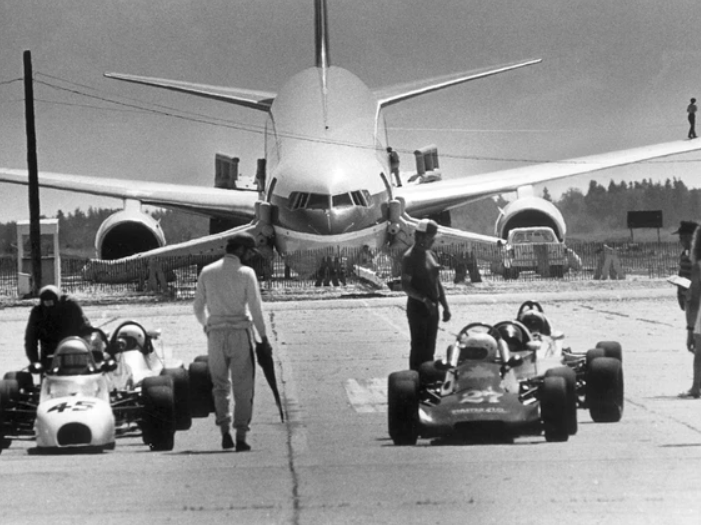
As an aviation enthusiast, I have watched most episodes of Air Crash Investigations since I was eight years old. In this series of articles, I’m going to share some of the investigations that have captured my attention. These investigations have helped the aviation industry establish safety measures to avoid future disasters. The story I’m sharing today ends on a positive note because, remarkably, no injuries occurred.
On July 1983, Air Canada Flight 143 was scheduled to fly from Montreal to Ottawa and then from Ottawa to Edmonton. The incident we’ll discuss happened during the final leg, from Ottawa to Edmonton. The aircraft was a brand-new Boeing 767, piloted by two experienced crew members: Captain Bob Pearson, with 200 hours on the 767, and First Officer Maurice Quintal, with 75 hours on the same aircraft.
The fuel gauges on the aircraft were inoperative, and the fuel quantity wasn’t displayed in the cockpit. According to the Minimum Equipment List (MEL), an aircraft cannot operate without this information unless specific conditions are met. (For context, the MEL is a document that specifies what equipment may be inoperative for a flight to proceed safely, as long as the required procedures are followed.)
Captain Pearson noticed that the previous crew had flown to Ottawa with the same issue, so he decided to follow suit. He reasoned that if the previous crew had managed, he could too. To determine the required fuel quantity, the crew performed manual calculations using a dipstick under the wings to measure the fuel remaining in the tanks. The measurements indicated 62 cm in one wing and 64 cm in the other, equating to 7,700 liters of fuel.

Here’s where the first mistake occurred. The pilots needed to convert the fuel quantity from liters to kilograms, as aircraft performance calculations are based on weight, not volume. Someone on the ground advised them to use a conversion factor of 1.77, which turned out to be incorrect. Jet fuel is lighter than water, so the proper factor should have been closer to 0.8. This error caused the pilots to overestimate the amount of fuel already onboard.
The second mistake happened when they calculated the additional fuel needed. Believing they already had sufficient fuel in the tanks, they ordered only 5,000 liters more—far less than required. The aircraft departed with insufficient fuel, carrying 69 passengers on board.
The first leg of the flight from Montreal to Ottawa went smoothly, but during the Ottawa-Edmonton leg, as the aircraft cruised at 41,000 feet, an alarm sounded, indicating low fuel pressure. Shortly afterward, both engines failed one after the other, leaving the pilots with only aerodynamic noise and minimal instrumentation powered by the emergency ram air turbine (RAT). The RAT, a small turbine deployed into the airstream, provided just enough hydraulic pressure to control essential flight surfaces.
Faced with a total engine failure, the crew declared an emergency and initially planned to divert to Winnipeg. However, First Officer Quintal, doing quick mental calculations, realized they wouldn’t make it. He used the aircraft’s descent rate and horizontal distance to calculate its glide ratio, or « finesse, » which turned out to be approximately 12:1. This meant that for every 1,000 feet lost in altitude, the aircraft would travel 12,000 feet horizontally. Based on this data, he confirmed that Winnipeg was out of reach.
Instead, Quintal suggested heading for Gimli, a former Air Force base he knew from his time in the Canadian military. Captain Pearson agreed and redirected the flight. With no engines and limited hydraulic power, the 767 became a glider—a poor one, given its size and weight. As the aircraft approached Gimli, it became clear they were too high. To lose altitude without gaining speed, Captain Pearson performed a risky maneuver called a forward slip, typically used in gliders but unconventional for airliners. This involved cross-controlling the aircraft, banking in one direction while applying opposite rudder, creating significant aerodynamic drag.
Despite these challenges, the crew managed to align the aircraft with the runway. However, the landing gear, extended manually due to the loss of hydraulic power, wasn’t fully locked. The nose gear collapsed on touchdown, but the aircraft skidded to a stop on the runway without causing any injuries. The Air Canada Flight 143 incident, later nicknamed the « Gimli Glider, » was a testament to the pilots’ skill and composure. It highlighted the importance of proper training, clear procedures, and accurate fuel calculations, leading to changes in how fuel management is conducted in the aviation industry.